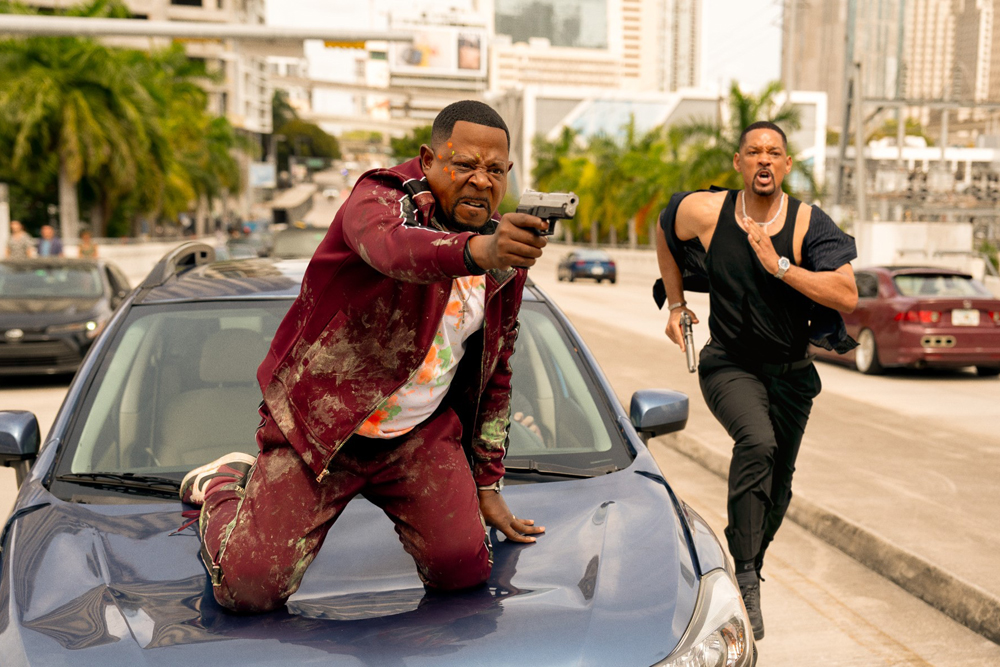
Miami’s finest are back! And for the fourth Bad Boys installment, Mike Lowrey (Will Smith) and Marcus Burnett (Martin Lawrence) find themselves on the run from the cartel and the cops after being framed while trying to clear the name of the late Captain Howard (Joe Pantoliano) from drug-related crimes. What it meant for production sound mixer Whit Norris and boom operators Charles German and Kevin Cerchiai was tracking the explosive action and rousing dialogue across practical locations and soundstages in Atlanta and Miami for Bad Boys: Ride or Die.
Norris is well-known in the sound community having got his start back in the 1980s when the Birmingham, Alabama native turned an internship during college into a flourishing career in production sound. He arrived in Atlanta by way of New York in 1987 – long before facilities like Pinewood (now called Trilith), Tyler Perry Studios, and Shadowbox Studios (formerly Blackhall Studios) broke ground on the now popular production region. Back then Norris taught himself how to use the Nagra to record commercials, industrials, and documentaries before tracking Hollywood blockbusters. His 100+ credits include Dogma, Fast Five, Ant-Man, Anchorman 2, Furious 7, and the upcoming film Red One starring Dwayne Johnson, Chris Evans, and Lucy Liu. For years Norris has relied on Zaxcom for his multi-track recordings.
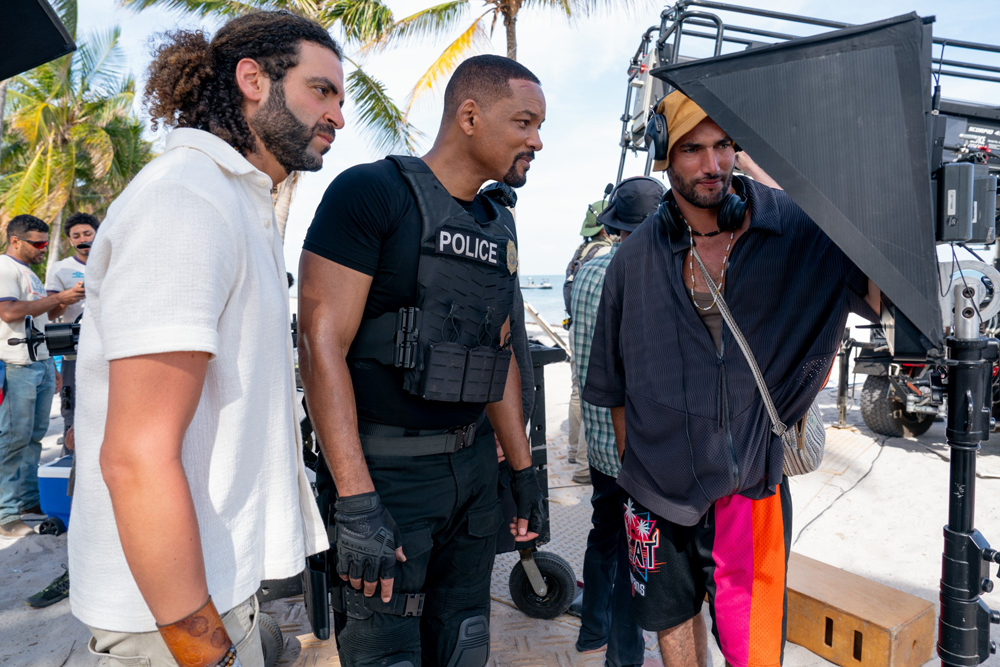
Ride or Die has Norris reconnecting with directors Adil El Arbi and Bilall Fallah, having previously mixed Bad Boys For Life (2020), a relationship formed through a connection with executive producer Barry Waldman via production supervisor Susan Ehrhart. Red One will be his fifth film with Waldman. Going into the project, the production mixer stressed the importance of attending technical scouts during pre-production. “I pretty much insist that I go on scouts on any production I’m on. I think it’s more valuable than prep time,” shares Norris. Unfortunately, not many sound mixers get that opportunity for one reason or another, like production management not being used to a sound person on the scouts. But there are so many issues you can address instead of trying to fix something on the day.”
Solving issues and challenges has always been Norris and his crew’s mantra. Part of the answer to those problems is having reliable gear. Norris’s sound cart is built around the Aaton Cantar X3, a company that closed its doors earlier this year. But before they did, Norris added it to his collection and now owns three. Two X3s are in working condition while the third is strictly for parts For wireless, two Zaxcom RX-8D receivers with the optional Dante upgrade communicate with up to 16 wireless channels (8 channels per RX-8D). Norris deploys ZMT-4 transmitters on talent as well as for the wireless boom. Additionally, Norris asked Zaxcom to alter the existing software on the ZMT-4 to allow for push-to-talk functionality. This allows the sound team to communicate with each other on set through the ZMT-4. “We asked Glenn Sanders at Zaxcom to modify the ZMT-4 software so we could use one of the arrow buttons as a push-to-talk and they did. So what’s really great is that every transmitter we use, whether it’s for comms, the actors, or boom, is the same which allows us to use the same battery everywhere. It made everything a little more fluid for us.”

Cameras first rolled in Atlanta before being interrupted by the labor strikes. The restart had production picking back up in Miami. For the Atlanta portion, boom operator Charles German was on hand while Miami native Kevin Cerchiai stepped in for Florida shoots, along with sound utilities Matthew Thompson and Keith Baskett and sound assistant/trainee Sawyer Burke. In preparation, Norris sends the script to the boom operators to get familiar with the material. “I’ll go over the script and then look at the one-liners and then figure out if we will need any extra things on a certain day,” says Cerchiai, who has worked on all four Bad Boys films.
Bad Boys is known for its heart-racing action and hilarious one-liners, however, the connecting emotional tissue is the love Mike and Marcus have for each other and their families. Mike sees his family grow in Ride or Die as he marries his love interest, Kristine (played by This is Us star Melanie Liburd). The elaborate celebration required extra attention from sound. “We had a big wedding scene with a lot of playback, so Patrick Anderson joined us for that.” The team used Pro Tools and placed speakers on set to fill the room with music for the cast to dance and sing along to.
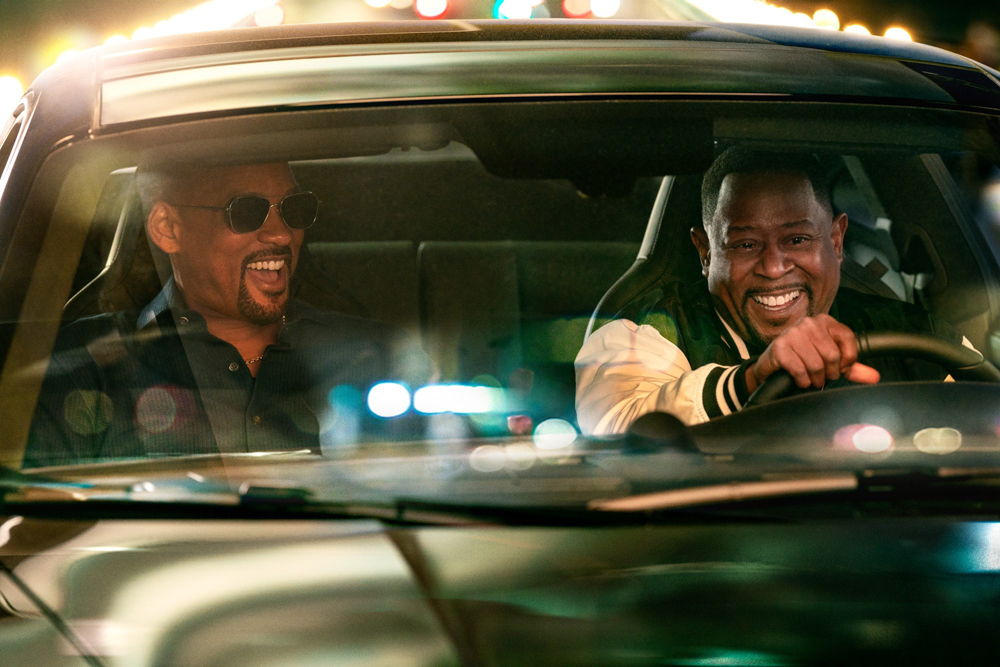
A big portion of dialogue scenes comes from Mike and Marcus driving the streets of Miami. The majority of them were shot on soundstages. “It’s always been a challenge to work on a process trailer. You’re contending with windows being rolled down and all the rattles and the bumps,” notes Norris. “It’s a nice change that it can all be done now with bluescreen or LEDs. We did most of the work on the stage with LED screens which projected the exteriors.” To mic the talent sound uses what they call “cupholder rigs,” which allows them to plant Sennheiser MKH 50 microphones inside the vehicle. Even so, they will also lav each actor with a DPA paired with a Zaxcom ZMT-4 transmitter. With the RX-8D, Norris can control the wireless remotely through ZaxNet, adjusting the gain, input, and power and placing them in record or stop modes.
For location frequency coordination, the team will scan one RX-8D at 535 MHz and the second RX-8D at 575 MHz as center points, giving each 15 MHz of space above and below for the 16 channels of wireless audio. Another trick the sound team uses on set is having utility Matt Thompson program all the wireless transmitter frequencies of the talent using a URX100 receiver. This allows Thompson to wire talent and tune in their frequency with the URX100 so that when an actor arrives on set everything sounds perfectly dialed in.
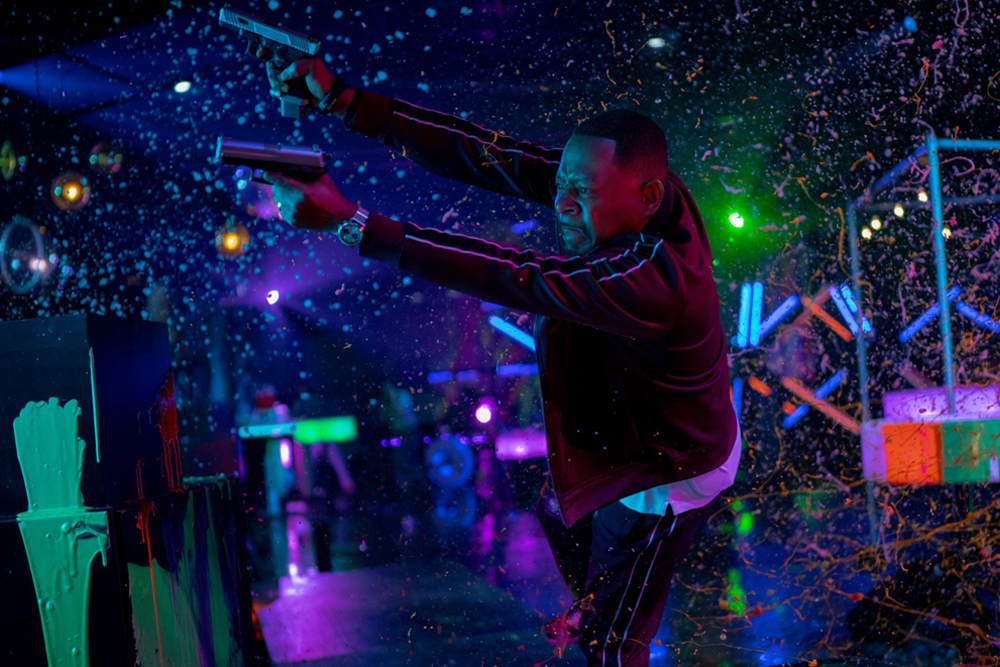
As Ride or Die unfolds, Mike and Marcus get closer to finding out who implicated Captain Howard. And for people who want to stop them they do so guns-blazing and each action set piece balloons in intensity. One sequence has the Bad Boys visiting a nightclub to talk to its owner played by former NBA star John Salley. The scene shreds the club with an obscene amount of bullets before spilling out into the streets. Another takes place on a Chinook which gets hijacked, sending Mike and Marcus into a tailspin. “You can only do so much with the production dialogue on a scene like that because we had massive wind machines, paper blowing around inside the helicopter, visual effects, and all the other factors that were going on,” says Norris. “We had everyone on wires and Matt Thompson did a really great job protecting the wires against the wind while still being able to get good guide tracks for post. You have to realize post will still use those tracks to cut to picture before they get an actor in there, so you have to record the best dialogue you can.”
Besides using wires, the sound team recorded wild lines with the actors for the Chinook sequence. “Since there were not that many lines, I made a suggestion to our directors to record the lines wild. This way, the actors are still in the same environment. It’s the best way to do it and it can keep some people out of the ADR room,” says Norris.
Even with the reliability of Zaxcom wireless, sound always tries to find a place for a boom. “Even though every actor that has dialogue is wired, we try to get the pole over their heads,” says Cerchiai. “With scenes that have a lot of cast, we know they are going to hose it down with three or four cameras, so knowing that, we focus on the close-up shots where the dialogue usually takes place. Then Whit will select what he thinks is going to be the best for his mix and offer that up.” Cerchiai appreciates the airiness of ZMT-4 while on set. “They are so small, so lightweight, I have no problem putting it at the end of my boom pole, which could be 20 feet out sometimes.” For exteriors, a Schoeps CMIT-5U is deployed while the Sennheiser MKH 50 is their go-to interior mic.
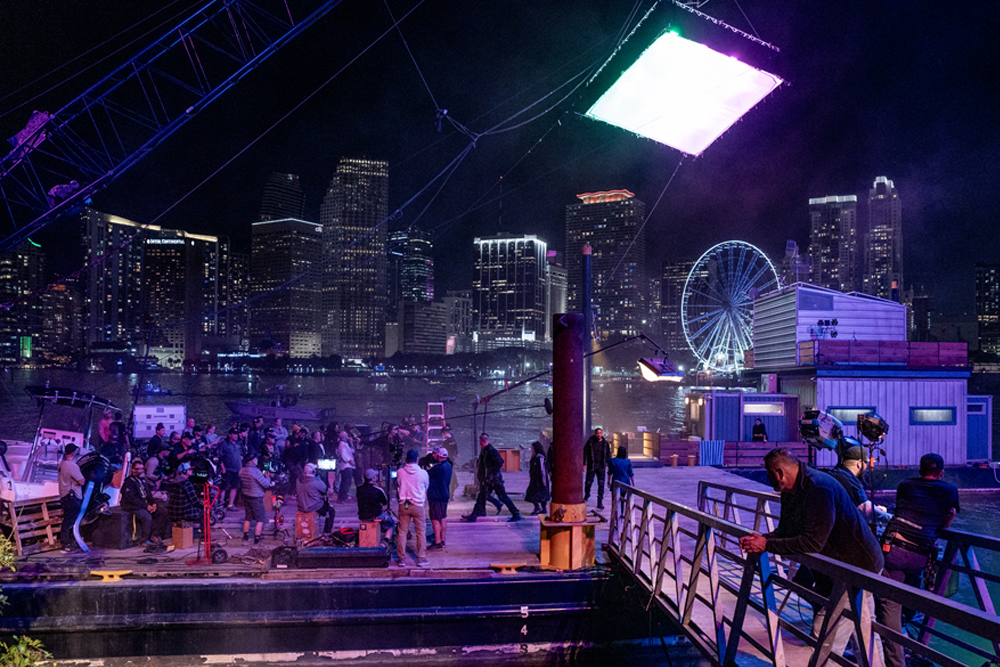
Like most big-budget affairs there can be little to no rehearsals. “You never really know what the actors are going to do until take one,” notes Cerchiai. “So sometimes I may play the boom a little bit safer because there might be a quick line or overlapping dialogue. But then we’ll start dialing in things after that first take. Something important to me for scenes on the dock was that I didn’t want to have my microphone kicked out too much towards the bayside, which is across the water where you see the skyline. That’s because a lot of the ambient noise comes across. Miami is a party place at night, especially on weekends when we were shooting.”
One of the biggest challenges the team faced was the climatic ending that takes place along the shore of an amusement park dubbed GatorLand after an albino gator who still roams the waters there. “It was a massive set that spanned a large area at Stone Mountain,” says German. “RF range was a big concern so we set up Whit’s cart on the main level of the exterior set and ran antennas to the top level. The RF spectrum can be crowded at Stone Mountain but the Zaxcom system worked flawlessly with no issues.To experience range like we had was quite incredible.”
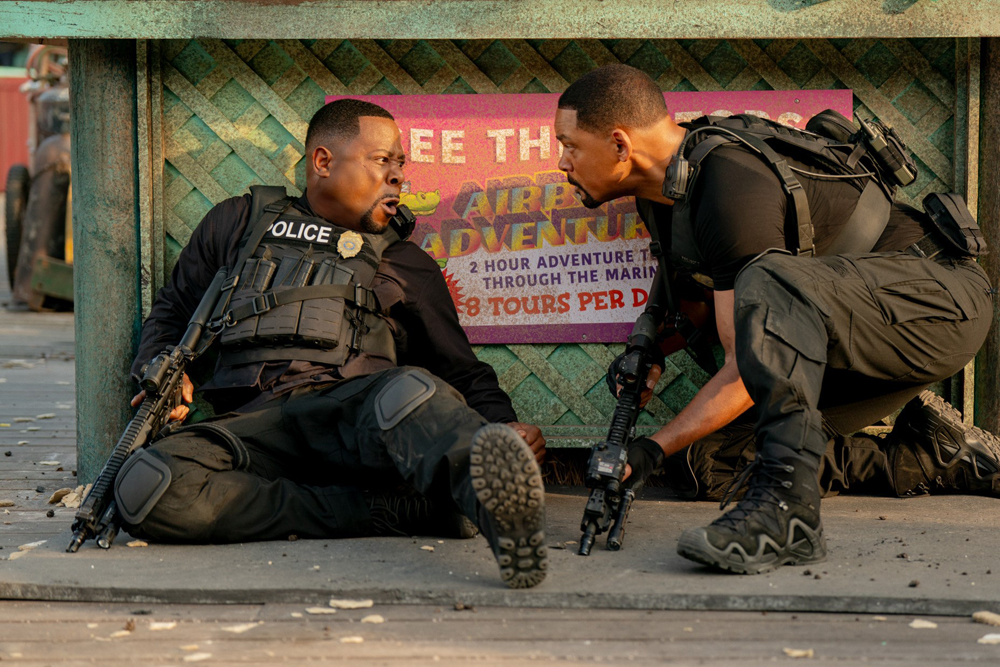
Adding to the immersive action was what production called the SnorriCam shot. It’s a body-mounted rig where the camera is physically placed on the actors as a first-person perspective. “It is a rotating camera that allows us to see Will and then spin it to see his POV,” adds German. The directors deployed the SnorriCam during the climatic ending as Mike tosses Marcus a gun. The end result creates a slick interaction between them as if viewers are immersed in a video game. “Booming was not possible as we were seeing 360-degrees. We decided to place a gooseneck mic on a Zaxcom ZMT-4 transmitter and attach it to the camera rig just out of frame. This allowed us to have a mic on Will at all times. The extreme compact size of the transmitter made this all possible,” says German.
Bad Boys: Ride or Die marks the near 30th anniversary for the franchise and for Norris and his crew, the thrill was watching Will Smith and Martin Lawrence. “There is such a great dynamic between those guys. It’s really good stuff,” says Norris. “And I love that Michael Bay always does a cameo.” German adding, “My fondest memory was the sound crew camaraderie. Matt Thompson did such an amazing job managing all the wires and keeping them sounding perfect. And Sawyer Burke was a great addition and he helped maintain all the wireless and assisted Matt in many ways. Whit, as always, was a great leader. He kept all the RF going and was a positive voice when things got tough. It was a great experience all the way around.”